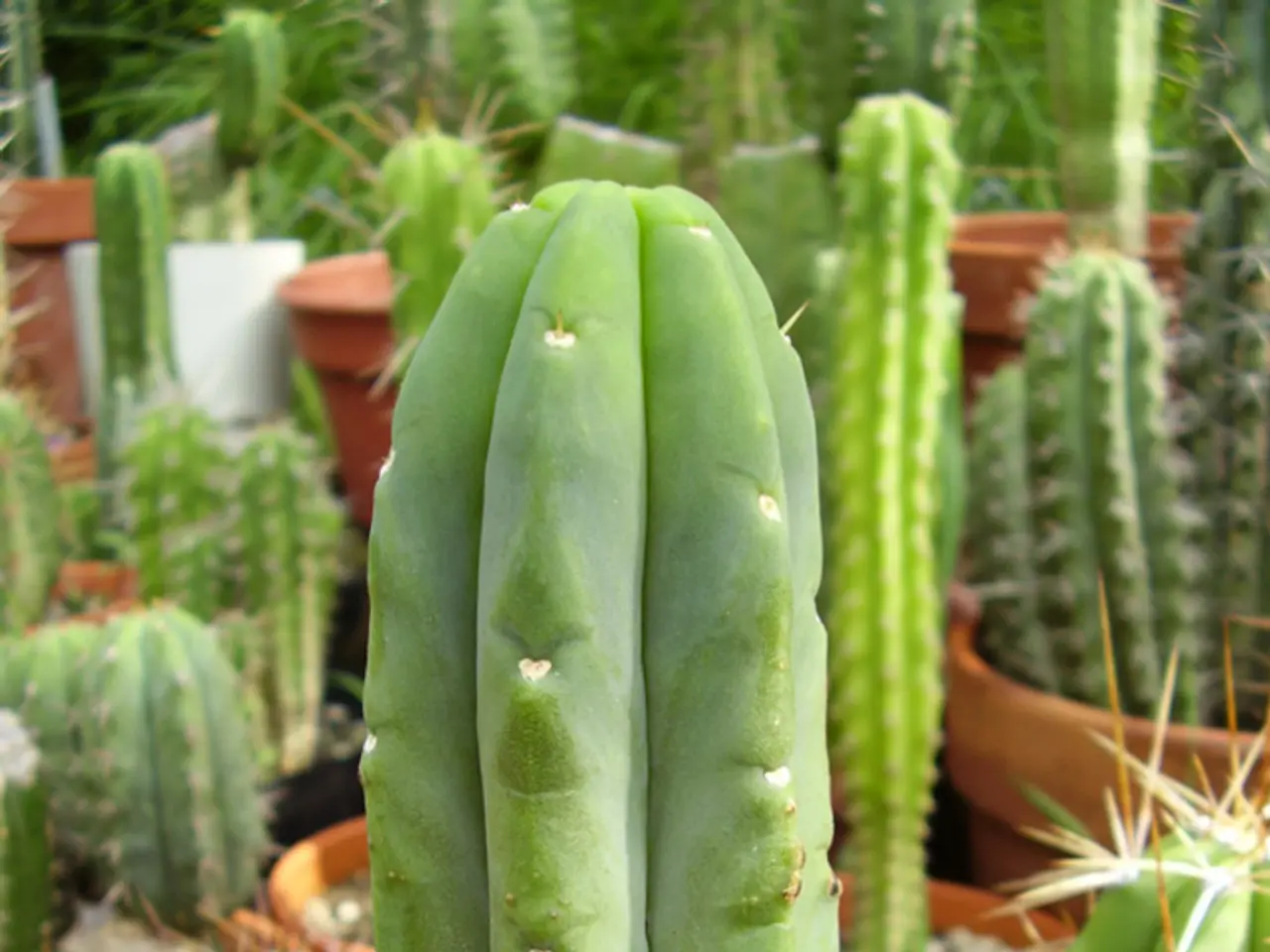Frequency of Watering Succulents: Expert Guidance for a Thriving Plant Life
In the world of houseplants, succulents stand out as one of the easiest to care for. Known as the 'camels of the plant world', these resilient species are drought-resistant and require minimal maintenance.
Their survival skills are due, in part, to the wax-coated leaves (farina) they possess. This protective layer shields them against direct sun and provides water resistance, making them well-equipped to thrive in various conditions.
When it comes to sunlight, succulents need about four to six hours of bright, filtered sunlight a day. Direct sunlight can scorch their leaves, so they thrive best in bright, filtered sunlight that fills a large, airy room.
However, overwatering is the most common cause of problems for succulents. Signs of an overwatered succulent include leaves turning black, mushy, or translucent. To avoid this, it's essential to use pots with drainage holes and well-draining cactus mix, and to let the soil guide you when watering.
The "soak and dry" technique is the best watering method for succulents. This involves watering the soil thoroughly until water drains out of the bottom of the pot, then letting the soil dry completely before watering again. It's crucial to water directly into the soil, avoiding the leaves, and ensuring excess water is drained away to prevent rot and fungal diseases.
In warm months, succulents typically need watering every 1 to 2 weeks. During winter, they may only need watering about once a month. Checking soil moisture by feeling it or using a moisture meter can help determine when to water.
For larger succulents, watering from the base in a sink with cold water for about 10 minutes is recommended. Bottom watering (submerging the pot in water briefly to let the soil absorb moisture) is another accepted method, but it should be done carefully and not too often.
Before going on vacation, watering deeply 1–2 days prior ensures the soil stays moist longer. A spray bottle is a priceless addition for succulent watering, helping to mist the leaves without over-saturating the soil.
Lastly, it's important to note that succulents are the best rockery plants, providing a striking, elevated look with minimal maintenance. The name succulent comes from the Latin word 'succus,' which means sap or juice, reflecting their ability to store water in their leaves.
By following these simple guidelines, you can enjoy the beauty of succulents in your home or garden for years to come. Happy planting!
- Succulents, known for their resilience and ability to thrive in various conditions, are not only suitable for homes but also for gardens, making them ideal for a home-and-garden lifestyle.
- The survival of succulents is partly attributed to the wax-coated leaves (farina) they possess, which not only shields them against direct sun and provides water resistance, but also gives them a unique beauty that enhances your wellness and home aesthetic.
- To maintain a healthy succulent, it's crucial to use a well-draining cactus mix and pots with drainage holes, and to employ the "soak and dry" technique for watering, ensuring excess water is drained away to prevent rot and fungal diseases.
- Aside from their low-maintenance nature, succulents can add an aesthetically pleasing touch to rockeries, offering a striking, elevated look that contributes to your lifestyle and garden's overall beauty.




